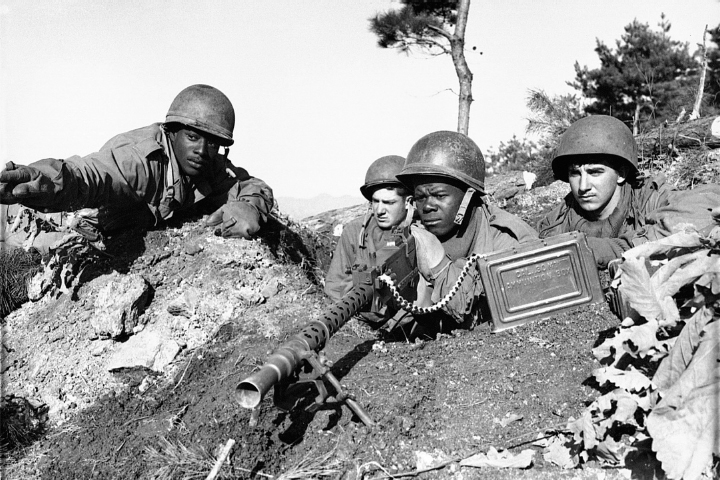America’s History: Printed Page 801
America: A Concise History: Printed Page 726
America’s History: Value Edition: Printed Page 706
Global Leadership and the Cold War
 National Archives.
National Archives.
When the United States officially joined the combatants of World War II, it entered into an alliance with England and the Soviet Union. That alliance proved impossible to sustain after 1945, as the United States and the Soviet Union became competitors to shape postwar Europe, East Asia, and the developing world. The resulting Cold War lasted four decades, during which the United States extended its political and military reach onto every continent. Under the presidency of Harry S. Truman, American officials developed the policy of containment — a combination of economic, diplomatic, and military actions to limit the expansion of communism — that subsequent presidents embraced and expanded.
Diplomatic and military intervention abroad was a hallmark of the Cold War. Most American interventions took place in developing countries, in recently independent, decolonized nations, and in countries where nationalist movements pressed for independence. In the name of preventing the spread of communism, the United States intervened directly or indirectly in China, Iran, Guatemala, Cuba, Indonesia, and the Dominican Republic, among many other nations, and fought major wars in Korea and Vietnam. This new global role for the United States inspired support but also spurred detractors. The latter eventually included the antiwar movement during the war in Vietnam. Chapter 25 focuses on the Cold War, and Vietnam is addressed in Chapter 28.